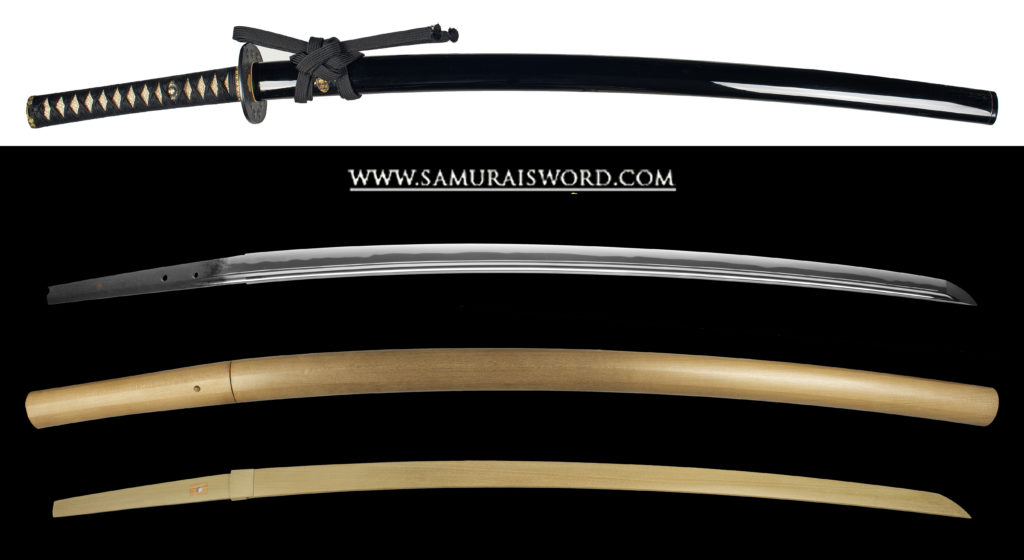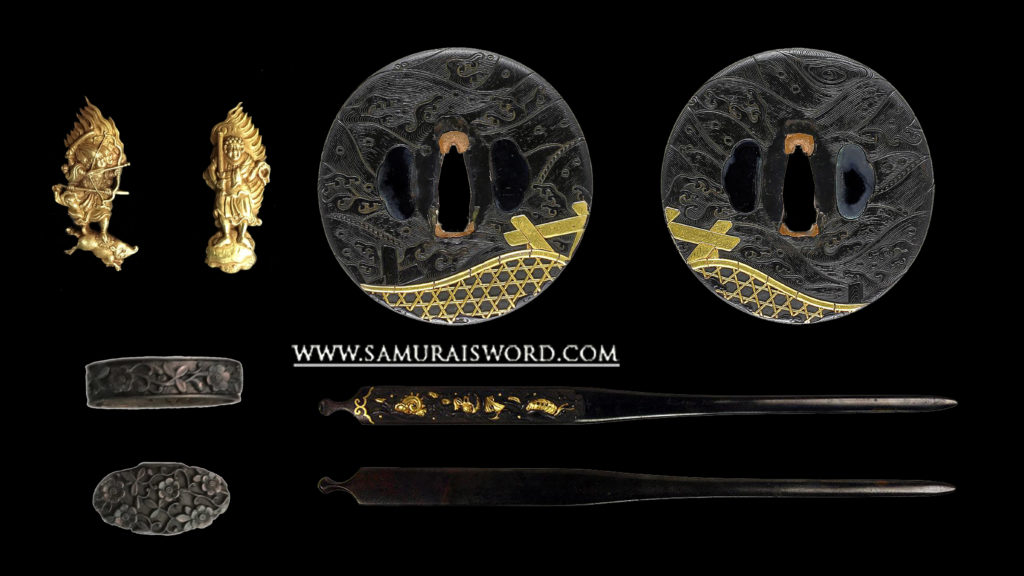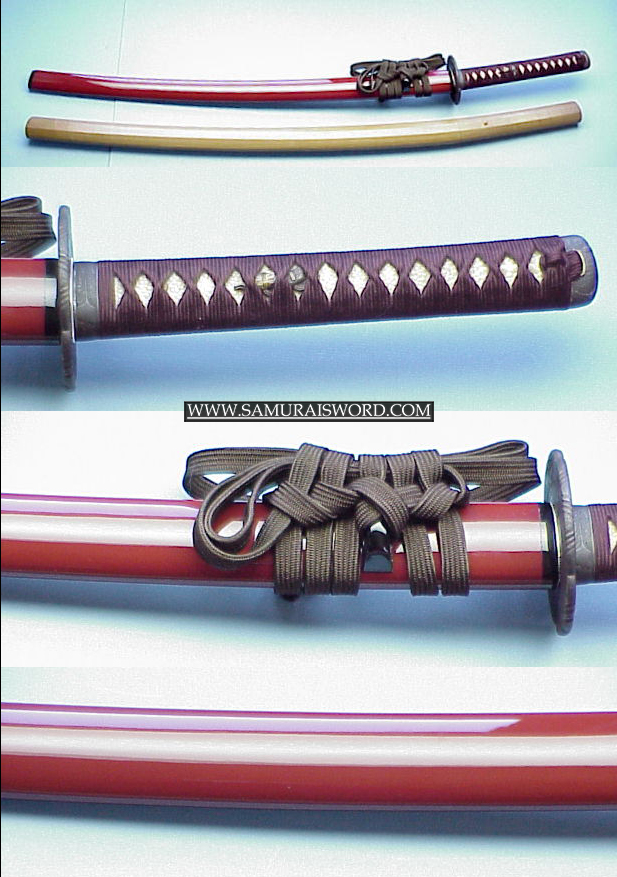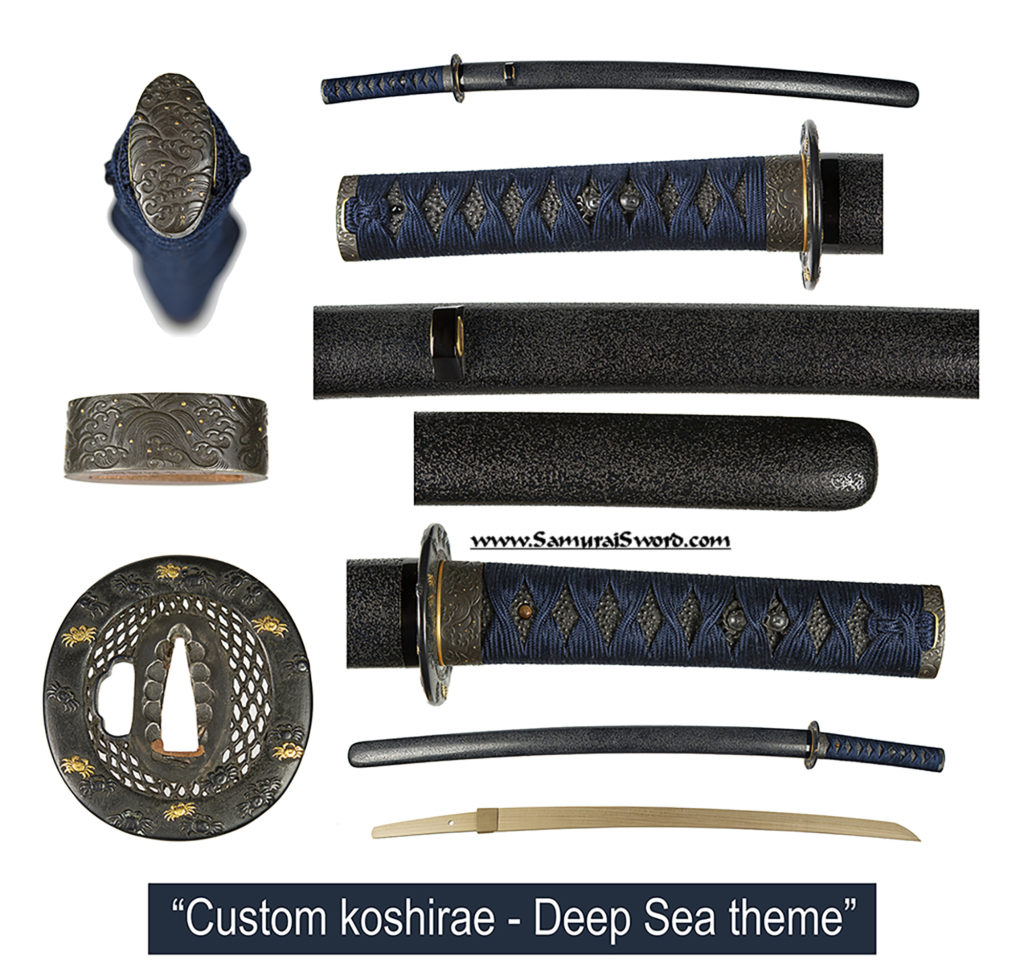Steps to having a traditionally made custom koshirae
Many fine antique Japanese swords today are found only in shirasaya (wooden storage case). A shirasaya keeps the moisture away from the sword and protects it long term. Their is no maximum monetary amount for custom koshirae and fittings, give us your budget, we’ll make the appropriate recommendations and work with you.
In the making of a custom koshirae it has the potential of your creating an heirloom to continue on within your family. We lead by example in stating that we continually strive to preserve nihonto and koshirae as our father did before us. With our help we will assist you in creating a traditionally made custom koshirae within your own desires of theme and budget.
It was not uncommon for Samurai to have their own koshirae made for special occasion such as in battle, formal wear etc. Many of our clients have custom koshirae made to put on display in their board room, office or their home essentially creating a great topic of conversation with their clients and friends.
By creating your traditionally made custom koshirae you’re supporting the modern day craftsmen, and keeping an century’s old tradition alive. Each koshirae is finely made by our respective craftsmen and made with great care, they truly appreciate your support.
Great appreciation is given to our clients and friends for allowing us to share with you a selection of their custom koshirae made by our craftsmen. Finally many thanks for our clients having great trust in allowing us to take part in the creation of these fine koshirae, with great care they will last generations.
Please read on for the necessary steps and scroll on to see examples shared.
Step 1: Choose your sword: either one of ours or your own (if your own we need it here to properly size up fittings)
Step 2: Based on our discussion to learn your tastes and budget, we will offer you a selection of fittings: Menuki, Fuchi-kashira, tsuba & kogai & kozuka as required in a theme of your liking. If you are not sure, we can easily make good suggestions within your budget.
Step 3: Choose your colors of tsuka-ito (lacing wrap), style of koshirae, color of lacquer, and many various options. Your choice of options and level of fittings will dictate the price, so we cannot list a vague price here not knowing what you’ll choose.
Step 4: At this point we send all the parts and blade out to the saya-shi for making of the base koshirae, after that the handle and saya go to the appropriate craftsman for finish work. We’ll keep you informed throughout the process. It can take about 3-12 months depending how complex your choices were. In most cases the work can be done in a very reasonable period of time. While we want to give you a final result as quickly as possible, quality control is important, we cannot rush the craftsman.
Step 5: Finally, payment of the blade & fittings will be required prior to sending out for custom koshirae. A down payment of 50% will be required on the building of the koshirae with balance due upon sharing photography of its completion.
Please see below for a sampling of traditionally crafted custom koshirae made for our clients. Cost’s do vary. Regardless of your budget we will do our best to accommodate you.
Pictures and content may not be copied/distributed without the express permission of samuraisword.com ©
This is signed – Ichimonji Dewa no Kami Yukihiro (????????)) wakizashi (55.7 cm nagasa [cutting edge]) made in kanbun which ranges from 1661-1673 AD with a 2 & 3 body gold inlay cutting test done by Nagahisa August 28th 1664, also to include a custom koshirae. Pictured is the sayagaki, placed onto a new 20+ year old aged honoki shirasaya, by Tanzan, Tanobe Michihiro sensei. Not pictured, The original shirasaya (in last 100 years or so) has sayagaki by ?? (Ken Sou), another name for Murakami Kousuke, a former board of directors for the NBTHK. His sayagaki states that “Ichimonji is the word that Yukihiro used only for his good swords”. Yukihiro has an NBTHK Tokubetsu-hozon certificate. The fuchigashira, menuki and tsuba each have NBTHK Hozon certificates. There is also a 5th certificate on the blade by NTHK-NPO at a Chicago shinsa, during the prior ownership.
See the sword-page for a full expansive listing of description and images. At this time, this is up for sale…

A Musashi daijo Tadahiro katana with solid gold inlay (kinzogan) stating “Daikichi” meaning (??, Great Luck). 71.1 cm. Koshirae is with kiri-mon-chirashi no zu tsuba (?????) – Tsuba showing an arrangement of kiri crests Unsigned: Etsuj? (??); kiri-mon tsubogasa-menuki (??????) – Tsubogasa-menuki showing kiri crests and matching kiri-mon kurikata & fuchigashira. All fittings very high quality!


A very fine Ono Yoshimitsu with horimono, exhibited in plate 24 in the Hayashibara Museum exhibition catalogue of "Ono Yoshimitsu's World of Juka Choji".

A large Tsuba “waves & gabion” circa 1500’s, ko-kinko with NBTHK certificate; menuki attributed to [top Mito school master] Hagiya Katsuhira (solid gold) theme fudo & Marici, circa 1800’s with NBTHK certificate; fuchi-kashira high relief carving “flowers”, circa 1500’s ko-Goto; and kogai “Goto waves & shells” circa 1500’s, ko-Goto school. All fittings very high quality!

Ono Yoshimitsu daisho with Makie chrysanthemum
Custom koshirae example with a burgundy-black lacquer and matched dragon Fuchi-kashira & kojiri.
Red lacquer koshirae








